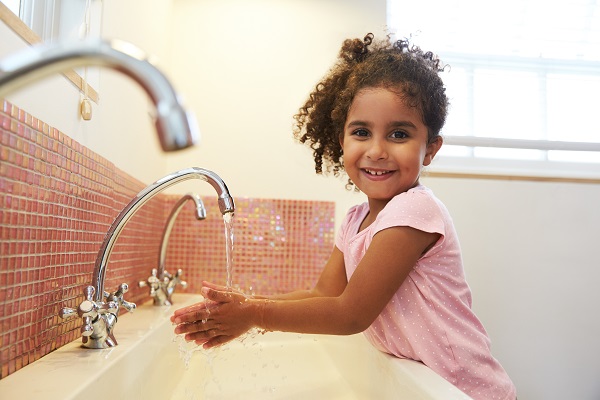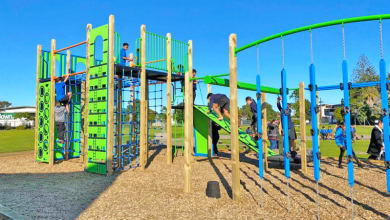Clean toilets – the mark of a good school?

How clean are your school’s toilets? Is it time to introduce a toilet charter?
During my overseas travels, I carried out an unofficial survey of toilets. The flashiest ones I found were in Monte Carlo; pretty much everything was automated and the seat put itself through a sort of spin-wash cycle before and after use, and the worst on board a Turkish ship. I’ll spare you the details, other than to admit I was prepared to wait until we docked in the next country rather than risk my life in that stinking cesspit of a not clean toilet.
Toilets were a hot topic amongst travellers in every country. “What’s the toilet like?” we’d ask each other about cafes, galleries, museums and hostels. It was the marker, the standard, by which we judged the quality of service provided in those places. No matter how shiny the brochure or how rich the history, the experience was always at least partially coloured by the state of the toilets.
It’s much the same in schools. In fact, Australian author and former principal John Marsden advises parents to make a beeline for the school toilets on any open day. “The quality of the lavatory facilities is the single best indicator of the respect in which children are held in a school; far better than any number of glossy brochures stuffed with photos. What you want to see are facilities that are sparkling clean, no graffiti, good quality toilet paper that will be soft on your little one’s bum, and fragrant soap. What you don’t want to see is a vile and smelly place that induces instant constipation in all who venture near.”

He’s not joking. Research published in the Nursing Times, UK, revealed that school toilet facilities are reported to be a problem for many school children as well as teachers, caretakers and school nurses. When children were asked to describe their school toilets, a clear picture emerged of poor standards of cleanliness, supervision and access. They said school toilets were smelly and dirty, that there was often no toilet paper, soap, hot water or towels.
In New Zealand, a survey of 68 schools in the South Island revealed that only 28 per cent followed the Ministry of Education’s code for toilet and bathroom facilities by providing warm water, liquid soap at every basin and functioning hand drying facilities. A further 37 per cent would have made the standard if they had provided hot water or fixed the roller towel dispenser.
The study, by researchers from Otago University and Public Health South, concluded that “a significant number of New Zealand children do not currently have access to high quality hygiene facilities at school”.
School socioeconomic position and toilet facility quality were not related.
This has serious implications for students’ health and well-being. If students avoid using the toilets because they are dirty and smelly, they can develop unhealthy toileting habits which can lead to constipation, a contributory factor in recurrent urinary tract infections in children.
And poor hand washing facilities mean that there is an increased risk of the spread of infectious diseases such as colds, flu and gastro bugs. Hand drying facilities are equally important; health officials say that drying your hands wipes off any germs and dirt loosened through washing, and that dry hands don’t spread germs like wet hands do. Put simply, good hygiene in the school washrooms equates to higher attendance rates. Going a step further by installing automatic dispensers for toilet tissue and hand towels eliminates a common contact point where germs can be transferred.
The Nursing Times concluded that if schools were treated as workplaces for children and equivalent standards were applied, school toilets would be significantly improved.

Keeping absenteeism down through good hygiene practices
Tork, suppliers of professional hygiene solutions such as toilet tissue, soap and hand towels to a great many education providers throughout New Zealand, specialise in helping schools manage these problems. Every school has challenges to contend with, but a common story is that almost all schools have washroom issues. Some schools suffer with more serious issues such as pilferage and vandalism while others deal with annoying mess and mischief.
With traditional washroom dispensers in schools, issues such as over-consumption and waste are commonplace. Tork offers solutions including high capacity dispensing systems that have controlled consumption such as single sheet handtowel dispensing and foam soap dispensers that contain 2500 doses per litre.
Tork also support schools in their quest to stay on top of hygiene issues. After all, improved hygiene means less absenteeism. Using systems where you only touch the toilet tissue or hand towel you take prevent contamination, as do systems where the product is fully enclosed unlike traditional toilet roll hangers.
According to the New Zealand Continence Association, this need not be difficult to achieve. In its kit, Toilet Tactics, the association urges schools to take up the challenge to improve their toilets or to maintain the high standard of their existing facilities. “Your school toilets can be improved by just implementing a few basic steps and it need not cost money.”
Toilet Tactics is designed to raise the standard in schools of healthy bladder and bowel habits in schools, and is based on the premise that many lifelong attitudes, behaviours and beliefs begin in childhood.
Schools are encouraged to involve students fully in the Toilet Tactics work, and to invite senior students to lead the project. The kit advises that all students should be surveyed for their opinions about the school toilets so any problems are clear from the outset. Responses may be startling; after reading the Toilet Tactics kit I surveyed some local children whose responses included:
“I hold on all day because the toilets are stinky”
“there’s poo smeared on the walls”
“there’s wee on the floor”
“there’s never any toilet paper”
“I haven’t been to the toilet at school since year two (a 13-year-old)”
When survey results are in, a school toilet charter can be drawn up to promote respect for each other and for school property. The charter is likely to include statements such as, “We have water, soap and hand towels”, “We always have enough toilet paper”, and “We leave the toilet clean after use.”
The MOE code:
- Every wash-hand basin shall be provided with an adequate piped supply of warm water, liquid soap and equipment to facilitate adequate hand drying. If a wash-hand basin in an existing building does not comply with this requirement, schools shall bring the wash-hand basin into compliance when that wash-hand basin is upgraded. All newly-installed wash-hand basins must comply with this requirement. Buildings with hot water systems to hand basins shall at all times be provided with an adequate piped supply of hot water which is not to exceed a maximum temperature of 40o









